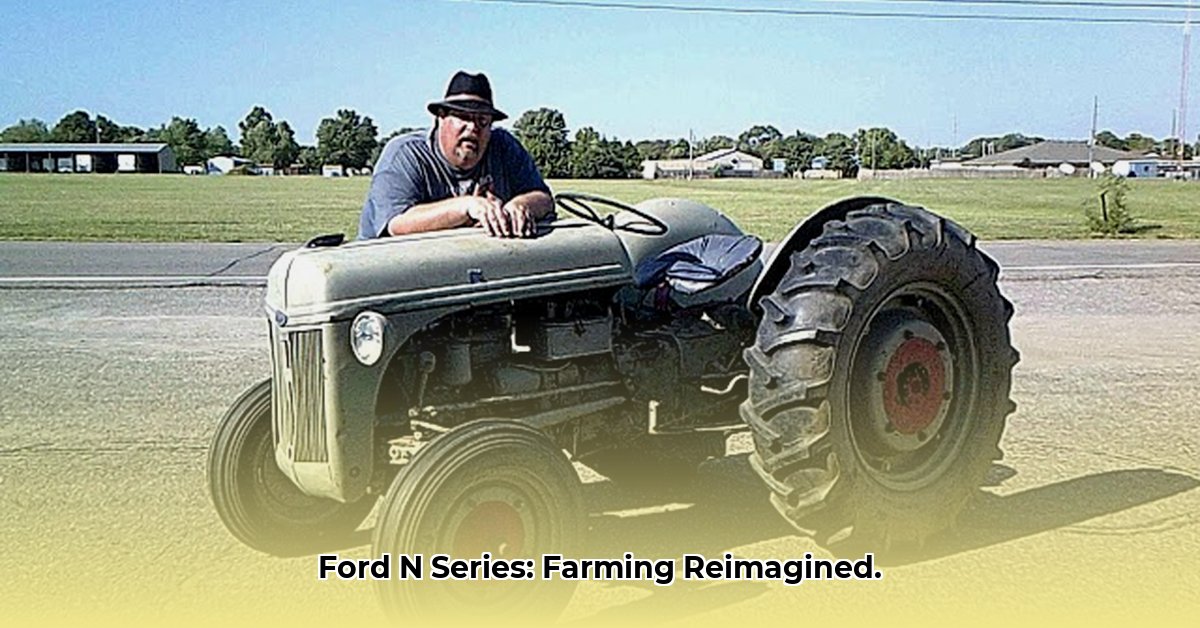
The Ford N-Series tractors—the 9N, 2N, and 8N—weren't just machines; they were agricultural revolutionaries. Their story is one of innovation, wartime grit, and a lasting legacy that continues to resonate with farmers and collectors. This isn't a dry recitation of facts; it's a narrative of how a few clever inventions dramatically changed the way the world was fed. For more on Ford tractor hydraulic issues, see this helpful resource.
The 9N: A Groundbreaking Design
Imagine farming before 1939. Attaching a plow was backbreaking work. Then came the Ford 9N, featuring Harry Ferguson's three-point hitch—a game-changer. This system allowed farmers to effortlessly attach and control implements. While its 13 drawbar horsepower (the tractor's pulling power) seems modest today, it was revolutionary then. The 9N's ease of use symbolized a turning point in agricultural efficiency. Wasn't this ease of use a significant factor in its early success?
The 2N: Wartime Adaptations
World War II brought material shortages. The Ford 2N, introduced in 1942, reflects these wartime constraints. Simpler designs and substitute materials were used to maintain food production. For example, the 2N utilized a simpler magneto ignition instead of the electrical system found in the 9N. However, the crucial three-point hitch remained, highlighting the enduring importance of Ferguson's invention even under duress. Indeed, the 2N’s continued functionality was a testament to both ingenuity and necessity.
The 8N: A Farming Icon
Post-war, farmers craved more power and performance. The 1947 Ford 8N delivered. With increased power (25-30 drawbar horsepower in later models), a smoother 4-speed transmission, and improved hydraulics, the 8N became incredibly popular. Its success cemented Ford's dominance in agricultural machinery. Many 8Ns remain operational today, a testament to their durability and enduring design. How many other tractors from that era boast such longevity and continued use?
The Ford-Ferguson Dispute: A Battle Over Innovation
The Ford N-Series story includes the legal battle between Henry Ford and Harry Ferguson over the three-point hitch patents and royalties. This clash, though contentious, significantly impacted the agricultural machinery industry and legal precedents surrounding intellectual property rights. The dispute highlights the complexities of innovation and the legal battles that can arise from groundbreaking inventions.
Legacy and Impact: A Lasting Influence
The Ford N-Series, particularly the 8N, transcends its status as mere machinery. These tractors represent a pivotal era in agricultural history. Many still operate today, showcasing their durability and engineering brilliance. Their design, especially the three-point hitch, laid the groundwork for modern farming technology. The N-Series' legacy lives on, both in its continued use and as a symbol of agricultural progress. What aspects of the N-Series' design continue to influence modern agricultural technology?
A Quick Comparison of Ford N-Series Tractors
| Model | Year(s) Introduced | Approximate Drawbar Horsepower | Transmission | Key Features |
|---|---|---|---|---|
| 9N | 1939-1942 | 13 | 3-speed | Introduced the revolutionary three-point hitch |
| 2N | 1942-1947 | 14-16 | 3-speed | Wartime simplification, magneto ignition |
| 8N | 1947-1952 | 25-30 (later models) | 4-speed | Improved hydraulics, increased power, widespread success |
The Ford N-Series tractors stand as a testament to ingenuity and perseverance. They are not just machines; they are symbols of a transformative era in agriculture, a legacy that continues to shape farming practices worldwide. Their influence remains profound, impacting the efficiency and effectiveness of farming methods globally.